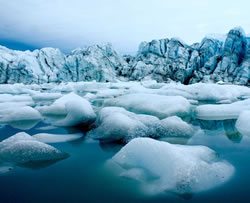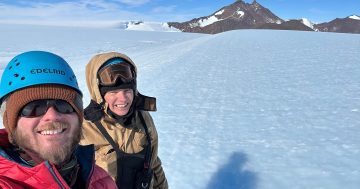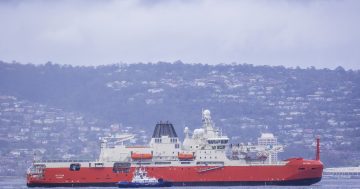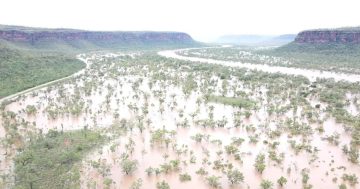Brandon Specktor* says Greenland’s total ice loss is approaching half a trillion tonnes — and that is bad news for coastal communities around the world.
 With the Arctic warming faster than anywhere else on the planet, the toll on Greenland’s massive ice sheet is becoming achingly clear.
With the Arctic warming faster than anywhere else on the planet, the toll on Greenland’s massive ice sheet is becoming achingly clear.
According to new satellite data compiled by Polar Portal, a collection of four Danish Government research institutions, Greenland has lost more than 4,700 billion metric tons of ice in the past 20 years.
This is roughly enough to flood the entire United States in half a metre of water.
This extensive ice loss has contributed to 1.2 centimetres of global sea-level rise in just two decades, the researchers wrote on their website.
The team’s data covers the 20 years from April 2002 to August 2021 and is based on observations taken by the Gravity Recovery and Climate Experiment (GRACE) fleet of satellites, which were launched in cooperation with NASA in March 2002.
These satellites measure changes in gravity around the world, which reflect how mass is distributed around the planet over time.
The Polar Portal team says this is especially useful for estimating changes to ice mass.
The GRACE data shows that Greenland’s ice loss is most severe around the coasts, where the ice is rapidly thinning and toppling into the ocean.
Ice loss is particularly stark on the West Greenland coast, where warming sub-surface waters are thought to be intensifying glacial melt, according to NASA.
NASA says Greenland’s ice melt is one of the main factors driving sea-level rise in response to climate change.
Greenland is currently on track to contribute seven to 13 centimetres to global sea-level rise by 2100, according to a 2019 study in the journal Nature — which could have devastating results.
Lead study author and climate scientist from the University of Leeds in the United Kingdom, Andrew Shepherd said that as a rule of thumb, for every centimetre rise in global sea level, another six million people are exposed to coastal flooding around the planet.
“On current trends, Greenland ice melting will cause 100 million people to be flooded each year by the end of the century,” Professor Shepherd said.
Greenland contains the world’s only permanent ice sheet outside of Antarctica. Together, Greenland and Antarctica contain 99 per cent of the world’s total freshwater reserves.
If the entire Greenland ice sheet melts, it could raise global sea levels by a staggering 7.4 metres. Meanwhile, Antarctica contains enough ice to raise global sea levels by more than 60 metres if totally melted, according to the National Snow and Ice Data Centre.
*Brandon Specktor has been a senior writer at Live Science since 2007. His work has also appeared in the Washington Post and CBS.
This article originally appeared on the Live Science website.











